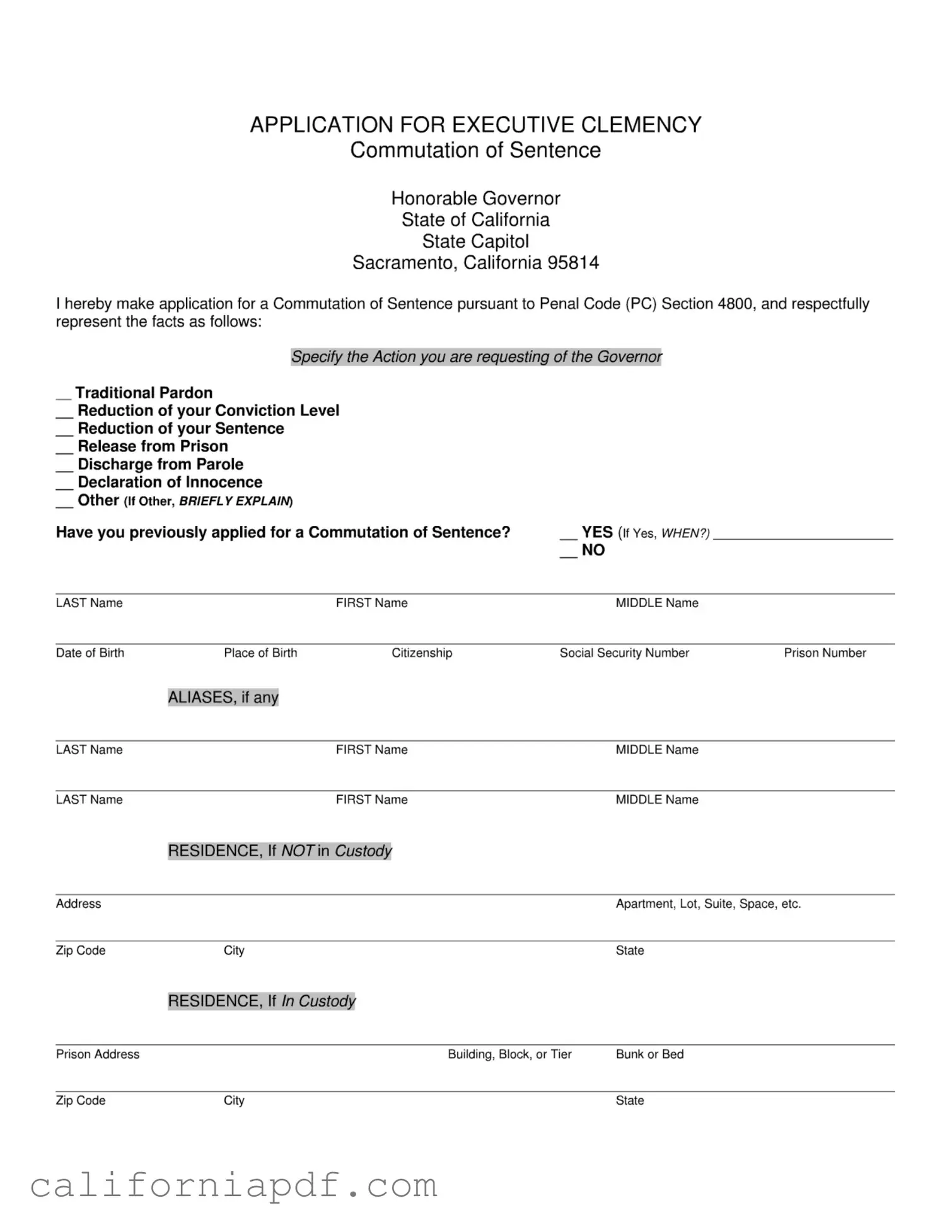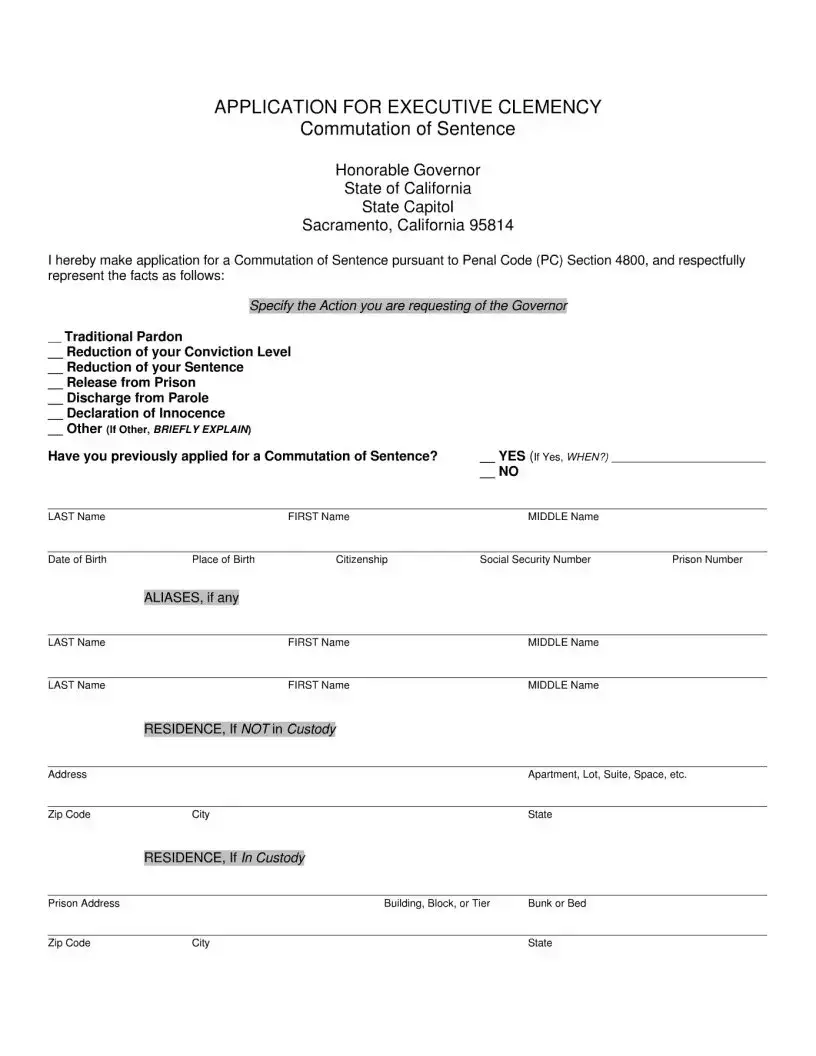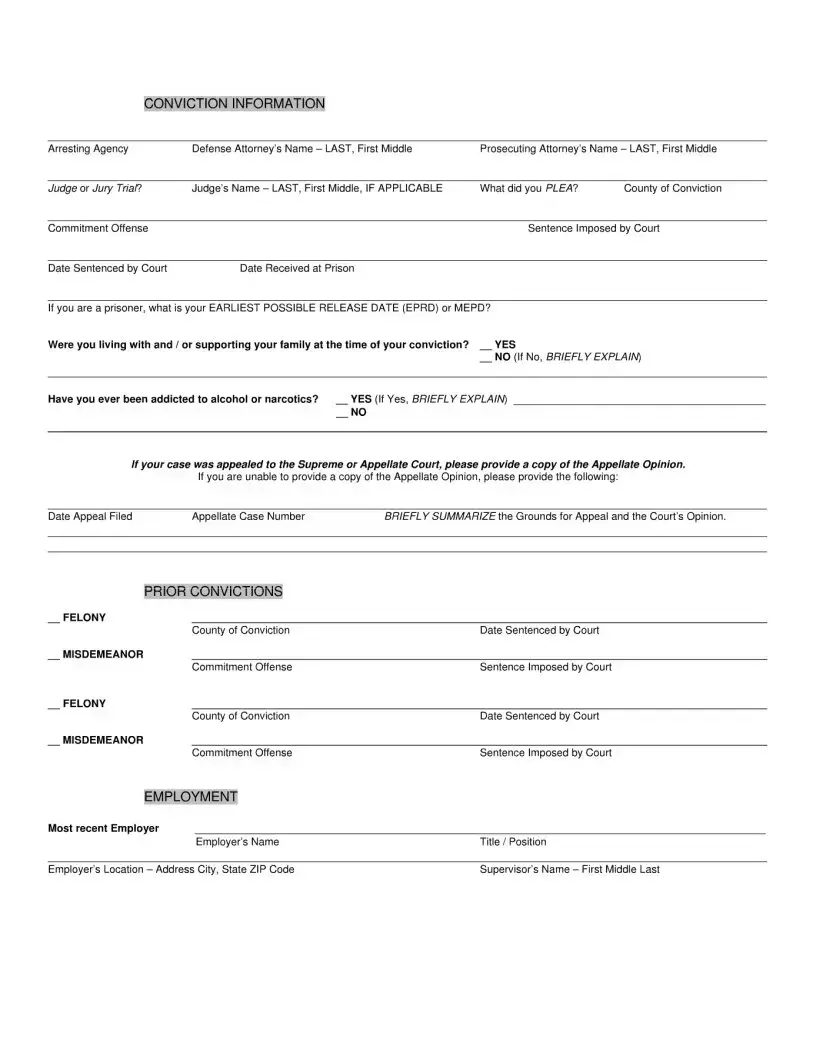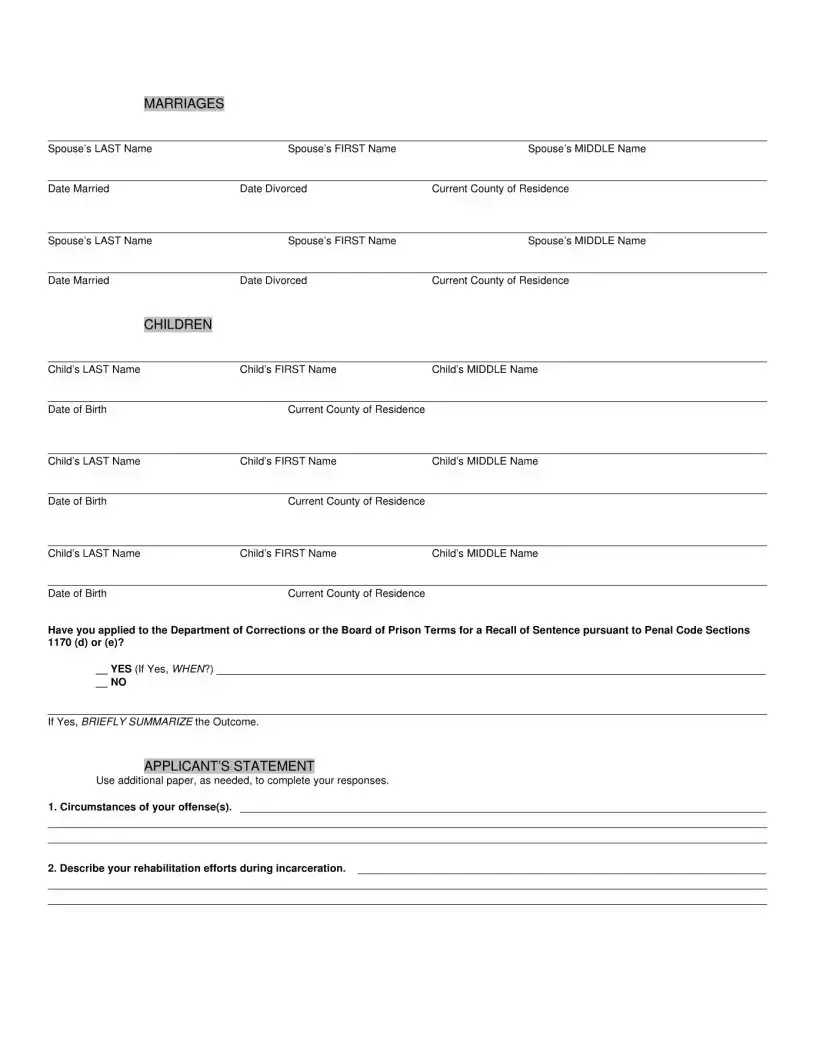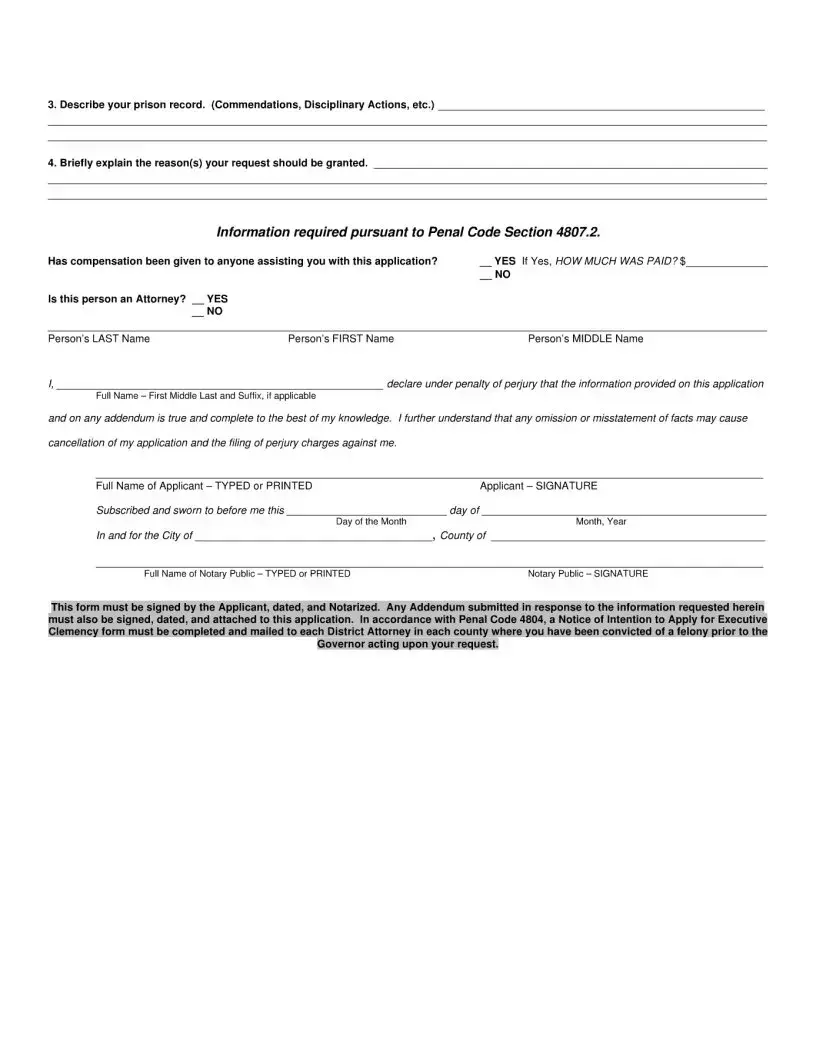What is executive clemency in California?
Executive clemency in California is a form of forgiveness that the Governor can grant to people who have been convicted of a crime. It can take several forms, including a pardon, a commutation of sentence, or a reprieve. This power allows the Governor to alleviate or modify the consequences of a criminal conviction.
Who can apply for executive clemency in California?
Any person convicted of a crime in California who believes that they have demonstrated rehabilitation and are deserving of forgiveness can apply for executive clemency. Non-residents who were convicted in California can also apply. However, individuals currently serving a sentence in state or federal prison must follow a different procedure and obtain a recommendation from the California Supreme Court.
How does one apply for executive clemency in California?
To apply for executive clemency in California, an individual needs to complete the California Executive Clemency form and submit it either by mail or online, if available. The application must include a detailed personal statement, the reasons for seeking clemency, and any evidence supporting the application, such as proof of rehabilitation or contributions to the community.
What types of executive clemency are available in California?
There are three main types of executive clemency available in California:
-
Pardon:
A pardon is a forgiveness of a crime and the cancellation of the relevant penalties. It is usually granted to those who have demonstrated exemplary behavior following their conviction.
-
Commutation of Sentence:
This reduces the length of an individual's sentence. It can be applied to both incarcerated individuals and those serving alternative sentences.
-
Reprieve:
A reprieve is a temporary postponement of punishment, often used in death penalty cases.
How long does the process for executive clemency take?
The process can vary greatly in length, often taking several months to several years. The timeline depends on the complexity of the case, the thoroughness of the application, and the current backlog of applications being reviewed by the Governor's office.
Is an attorney required to apply for executive clemency in California?
While an attorney is not required to apply for executive clemency, consulting with one can be beneficial. An attorney can help prepare the application, ensure that all the necessary information and documentation are included, and provide advice on the best way to present your case.
Can a denied clemency application be re-applied in California?
Yes, a person can reapply for executive clemency in California if their application is denied. However, it is recommended to wait a certain period and to present new information or evidence of further rehabilitation in the new application.
What impact does a pardon have on a criminal record in California?
A pardon in California does not erase a criminal record. Instead, it adds a notation to the individual's record indicating that the Governor has granted a pardon. This can significantly impact how future employers or licensing agencies view the individual's criminal history.
Are all convictions eligible for executive clemency in California?
Most convictions are eligible for executive clemency in California, but there are some exceptions. Certain sex offenses, especially those involving minors, may have restrictions. Additionally, individuals convicted of federal offenses must seek clemency at the federal level, not through the state of California.
Does receiving executive clemency restore gun rights in California?
In most cases, receiving a pardon will restore gun rights in California, unless the pardon explicitly states otherwise or the conviction involved the use of a dangerous weapon. However, restoration of gun rights may not apply if there are federal restrictions or convictions involved.
